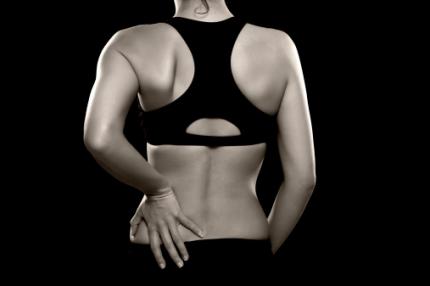Sports Medicine


Hidden Cause of Lower Back Pain
Lower Crossed Syndrome
Eighty percent of the population will reportedly experience low back pain at one time or another. Low back pain has many causes, but most of it isn’t the result of any type of accident or trauma. It seems that low back pain kind of sneaks up on you when you least suspect it, just like body fat. Before you know it, your low back is aching and you can’t figure out why. Let’s go over one of the more recently diagnosed—but often not diagnosed—causes of low back pain. It’s called lower crossed syndrome. Lower crossed syndrome occurs when certain muscles have become weak and other muscles too tight. This changes how the spine and muscles work and reduces the back’s ability to handle simple, everyday stressors such as sitting or walking. This syndrome occurs when the lower back muscles (the erector spinae) and the hip flexor muscles (the iliopsoas) become too tight. It’s made worse by the abdominal muscles and butt muscles (the gluteus maximus) becoming weak. When this happens, the pelvis shifts anteriorly and creates a larger arch in the lower back and protruding abdominals. This is a common look for advanced bodybuilders when they are onstage. This anterior pelvis shift puts excess stress on the lower back vertebrae by increasing compression on the discs and joints of the spine.

LOWER CROSSED SYNDROME TEST
One of the easier ways to tell if you have this problem is to look in the
mirror when you have a pair of pants on with a belt. Turn sideways and see if the front of the pants and belt is angled downward and is a lot lower than the back of the pants. A small amount of downward tilt is acceptable, but when it is quite dramatic and you see your belly hanging out, you probably have this problem. How do you treat it? What can be done about it? Well, it depends on how severe and chronic it is. If it isn’t too severe, the psoas stretch for the hip flexor can be very effective along with strengthening your core with planks and crunches.
If it is severe and you have a lot of pain, a good therapist or doctor will be able to diagnose it and treat it appropriately. If the lower back is in a lot of pain, the muscles in the lower back and hip fl exors will need a lot of work in relaxing them. That can be done appropriately by using either manual techniques such as massage or myofascial work such as Active Release Techniques (ART) on the hip flexor, and using muscle stimulation, acupuncture, or electrical modalities such as interferential current on the lower back to release the tightness. If the muscles in the low back and hip flexors have been chronically tight, mobility in the spine needs to be re-established. A chiropractic adjustment will restore normal motion and joint mechanics to the spine and also restore normal nerve impulses to the muscles. If the abdominals and glutes have become weakened, they need to be strengthened by using specific exercises. For the abdominals, the pelvic tilt exercise allows you to do this. The way this exercise is done is to lie on the floor with your knees pulled up and feet flat on the floor. Then you flatten out your lower back by pushing it down towards the floor and feeling your pelvis tilt backwards. If you are having a hard time with this, a good coaching tip is to slide your hand under your low back. When you feel the low back press down onto your hand, you know you’re doing it right. Hold for a count of ten and do at least two sets of 10 repetitions. This will also relax the hip flexor muscle and restore normal tension and length to the muscle, instead of it being tight all the time. The glute muscles are also in need of strengthening.

A good exercise for the glutes is to lie flat on the floor with your knees pulled up and feet flat on the floor. Now raise your hips until your whole upper body is in line with the legs. Squeeze the glutes as you are going up to increase the tension and focus on the glutes. Do this slowly so you work the muscle fully instead of just bouncing your butt up and down off the floor. Focus on the muscle, not the motion. Hold for a count of three at the top and do at least two sets of 10 repetitions.
LOWER CROSSED SYNDROME CAUSES
One of the main causes of lower crossed syndrome is excessive sitting. Society in general has been sitting more and more—at our desks at work, in front of the computer, driving to work, in front of the TV—to the point where we’re sitting more than we’re moving. This teaches the hip flexor muscles to shorten up and allows the abdominal muscles to weaken because there is no stress on them when you are sitting. So a good rule of thumb is to get up from your chair every half hour, even if only for 15 seconds, to allow the hip flexor muscles to lengthen out and the abdominal muscles to contract. This, along with a good exercise program, will reduce the incidence of lower crossed syndrome.
For more tips and tricks from Dr. Ken to help YOU become a healthier, more effective bodybuilder, click here!

